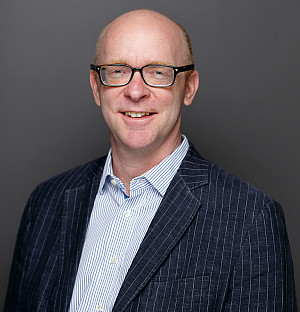IU Chemist’s Fluorescent Innovation Could Revolutionize Healthcare and Tech
Indiana University Bloomington chemist Amar Flood has developed the world’s brightest fluorescent materials, with the potential to reshape industries from healthcare to technology. Flood, a professor in the College of Arts and Sciences’ Department of Chemistry, was recently recognized for his groundbreaking work by being elected a fellow of the American Association for the Advancement of Sciences.
Flood’s journey into this field began with a simple desire to collaborate. This led to the creation of small molecule, ionic isolation lattices (SMILES), materials that emit fluorescent light at nearly 30,000 brightness units—making them the most brilliant materials ever created. These compounds absorb ultraviolet light and emit a neon glow, unlike traditional lightbulbs.

The discovery of SMILES was, as Flood describes, an accident. He and collaborator Bo Laursen of the University of Copenhagen, observed a striking increase in fluorescent brightness when they mixed positively charged fluorescent cations with negatively charged anions. This observation spurred further investigation.
“It was like the joy of children on the playground,” Flood said. “I’ve got a molecular toy, Bo had a molecular toy, and we wanted to see what magic we could create together.”
The exceptional brightness of SMILES stems from a “molecular glue” comprised of special macrocyclic molecules called cyanostars. These cause dye molecules to pack together at high densities, allowing the materials to retain their color, crucial for real-world applications.
“Our fluorescent materials discovery has the capability to be used in medical devices for medical diagnoses of diseases,” Flood explained. “For example, in labeling technology, we imagine we can use the fluorescence to label cancerous tumors and enable surgeons to see exactly where to cut under ultraviolet light.”
Flood envisions a wide range of applications, including advancements in microscopy:
“If you can replace the fluorescent labels with these super bright materials, you can get more light coming out and can replace the high-end microscopes with low-end instruments. Then you begin to think, ‘Can I use a phone as my microscope?’ We can disrupt a lot of technologies.”
To bring his invention to market, Flood secured the technology with patents and partnered with the IU Innovation and Commercialization Office which licensed the technology to his startup company, Halophore. The Indianapolis-based company, co-founded with former graduate student Chris Benson and Laursen, is working with medical device companies to commercialize the research. Benson currently serves as the company’s CEO.
Flood recognizes the importance of the support he received. “ICO is really supportive of faculty-driven activities because they understand that if you support faculty, then there’s a strong likelihood for commercialization,” he noted.


